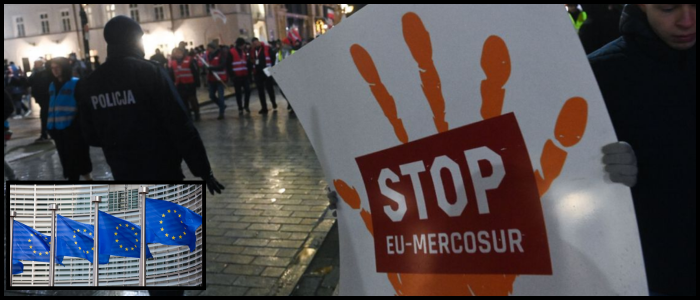Poland’s economy revealed a surprising strength in April and labour market data indicated an unexpected rebound. Meanwhile, new policies on pensions and the environment are re-engineering the country’s economic and social landscape.
Wages and jobs exceed forecasts.
The job market showed further improvement in Poland in April. According to the Central Statistical Office, The average gross wages in enterprises of 10 or more people employed grew compared to last year by 9.3 percent. This was sharply up from wage growth, which had been running at less than 8% for several months. Most economists had expected a continued deceleration, so this rise was unmistakably a surprise.
Employment numbers too moved up. The ranks of those working for larger companies swelled by 2,800 from March after drought-like declines over the past year. Higher wages and more people in work typically indicates greater confidence among businesses — but is also a worry for inflation just as the National Bank of Poland had started to cut interest rates. The Monetary Policy Council also suggested that there will probably be no more reductions in June, especially after the new wage statistics.
Industrial production also defied expectations, rising by 1.2% in April year-on-year instead of falling, as had been widely predicted. This expansion points to potential stabilization in the manufacturing industry.
But the construction sector is still flailing. “Output declined 4.2% in April versus the same month a year ago – the weakest monthly performance since December. The sector had shown signs of a recovery in January, but has since experienced more stagnation and decline, and there are doubts about its long-term recovery.
Trends in Early Retirement and Pension Participation
Poland has the highest early retirement rate in the EU. More than half of Poles between the ages of 50 and 74 are no longer working, according to Eurostat, compared with an EU average of 39.7 percent. It’s a result of Poland’s relatively low retirement ages — 60 for women, and 65 for men — and a not very uncommon habit among Poles who retire almost as soon as they can, even when waiting longer would net them higher monthly pensions.
By the end of 2024, practically 85% of those aged 50-55 in Poland remained economically active. But 55- to 64-year-olds participated at a rate of 61%, and just 6.3% of respondents over 65 did. Of that oldest group, only 9 percent of men and 4.4 percent of women were still working.
In an attempt to assist the public with retirement planning, the government is pushing through new legislation to give more accessible pension information. The proposal is to enable people to check their pension contributions and future benefits via the government’s mObywatel mobile app. That is a data set that’s actually already on ZUS’s website, but this time it would be more accessible and user-friendly. However the app’s new feature could only be used by individuals with a valid ZUS information profile.
EU funds for climate transition, and trade tensions
Poland itself is also gearing up for a big change on environmental policy. The forthcoming ETS II programme, due to go live in 2027, will also bring carbon pricing to buildings and road travel. Though the measure aims to cut emissions 42% by 2030 compared with levels in 2005, it has faced political pushback over the possible higher costs for households and businesses.
In order to facilitate this process, the EU promised to provide Poland with as much as PLN 153 billion (around €35.3 billion) in aid. The money will be used to modernize infrastructure and aid low-income households hit by higher energy costs, the funds will go toward.
And trade uncertainty returned after US President Donald Trump out of the blue unveiled a 50 percent tariff on EU imports. On a Friday, the decision, announced publicly in a Friday statement, sent stock markets across Europe lower, including a 0.8% drop in Warsaw’s WIG20 index. Two days later, Trump did an about-face after a phone call with European Commission President Ursula von der Leyen. He said he would press ahead with talks until the original deadline of 9 July, thereby calming financial markets.
Romania and Bulgaria at Eurozone and Fiscal Crossroads
Bulgaria is also reaching the point of entry towards the euro area, after the publication of the staff working document and convergence report of the European Commission and European Central Bank on 4 June. If sanctioned, the EU could confirm the country’s membership as early as the middle of June, with the final financial decisions coming in July. Bulgaria’s currency, the lev, is already pegged to the euro, diminishing the potential for significant economic upheaval.
In Romania, President Nicușor Dan, newly elected and campaigning on promises to ease traffic, has warned the country’s budget deficit could hit 7.5% of gross domestic product in 2025 — among the highest in the EU. This perpetuates a disturbing trend: The deficit exceeded 9 percent last year. The credit rating agencies are closely following Romania and could downgrade the country unless it introduces credible fiscal reforms. In the face of such demands, the president has refused to agree to tax increases, indicating that deficit reduction will have to be done more slowly and over time.
PREV NEWS
NEXT NEWS







BY Oskar Malec

BY Oskar Malec

BY Oskar Malec

BY Oskar Malec

BY Oskar Malec
Uwielbiamy pliki cookie — zarówno te jadalne, jak i cyfrowe, które ulepszają Twoje wrażenia z przeglądania. Pomagają nam one udoskonalać funkcjonalność naszej witryny i Twoje ogólne wrażenia. Podstawowe i funkcjonalne pliki cookie są niezbędne do prawidłowego działania witryny i nie można ich wyłączyć. Ponadto używamy plików cookie w celu optymalizacji wydajności („komfort”) i wyświetlania spersonalizowanych reklam („marketing”), na co potrzebujemy Twojej zgody. Kliknij „Zezwól na wszystkie”, aby wyrazić zgodę na przetwarzanie danych. Uwielbiamy pliki cookie — zarówno te jadalne, jak i cyfrowe, które ulepszają Twoje wrażenia z przeglądania. Pomagają nam one udoskonalać funkcjonalność naszej witryny i Twoje ogólne wrażenia z przeglądania. Podstawowe i funkcjonalne pliki cookie są niezbędne do prawidłowego działania witryny i nie można ich wyłączyć. Ponadto używamy plików cookie w celu optymalizacji wydajności („komfort”) i wyświetlania spersonalizowanych reklam („marketing”), na co potrzebujemy Twojej zgody. Kliknij „Zezwól na wszystkie”, aby wyrazić zgodę na przetwarzanie danych.
Twoja zgoda obowiązuje również na mocy art. 49 (1) (a) RODO, co oznacza, że Twoje dane mogą być tymczasowo przetwarzane poza EOG, w tym w USA. W takich przypadkach wysokie europejskie standardy ochrony danych mogą nie być w pełni zagwarantowane, a władze USA mogą uzyskać dostęp do Twoich danych bez skutecznego środka prawnego. Możesz wycofać swoją zgodę w dowolnym momencie.
PrywatnośćWarunki korzystania z serwisu
Możesz zarządzać swoimi preferencjami dotyczącymi plików cookie lub wycofać zgodę w dowolnym momencie za pośrednictwem naszych ustawień plików cookie. Aby uzyskać więcej informacji, zapoznaj się z naszą Polityką prywatności.